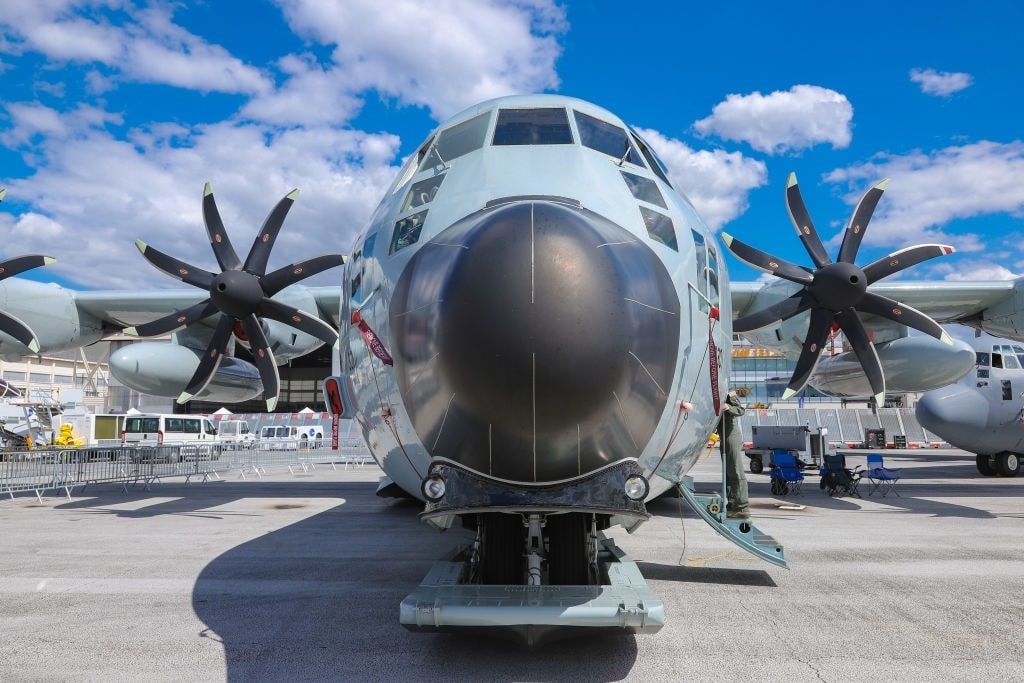Preserving the national defense leadership structure in nuclear war is critical. An enemy believing that US leadership command and control will still be intact and operational even if it attacks first with atomic weapons is a strong deterrence. To that end, the US Air Force awarded a $13 billion contract to Sierra Nevada Corporation (SNC) to produce a new Survivable Airborne Operations Center (SAOC) – a doomsday plane, for those who like the theatrical sound of the nickname.
As the threat of nuclear war grows with the increased nuclear weapons capability of America’s most threatening adversaries, the national security of the US depends on the ability to preserve the command and control means to direct a retaliatory strike and maintain continuity of government. Being able to communicate with and control US forces on the ground, in the air, at sea, and under the sea is critical to the survival of the nation in a nuclear attack. The current National Airborne Operations Center (NAOC) designated the E-4B “Nightwatch” is a purpose-modified Boeing 747-200 first flown in 1973. Four aircraft were purchased. The half-century-old airframe is being replaced by a more capable version, the SAOC.
Doomsday Plane a Challenging Build
The win for SNC was a come-from-behind under-dog source selection award. Known for its competence in aircraft weapons systems integration, electronics, and aircraft modification expertise, among the largest aircraft SNC has worked on were variations of the C-130 cargo aircraft. Many see the SAOC as a challenge for the winning bidder. As Breaking Defense described the award to SNC, “The win represents one of the largest undertakings in the mid-size firm’s history. SNC will be expected to not only incorporate military systems like air refueling and secure communications, but also harden commercial aircraft against electronic and nuclear attack.”
 However, the mid-sized aerospace company took on the big defense corporations like Boeing, the incumbent for maintaining and sustaining the current fleet of E-4Bs. Among its other corporate woes lately, “Boeing was let go as the sole provider of the doomsday planes in December 2023 after the company and US military could not agree on pricing for the next-generation fleet,” according to a Daily Mail report. Often, when there is a disagreement about what the Defense Department is willing to pay versus what the prospective defense contractor asserts is the best price, mainly when the defense contractor is the incumbent, an element of hubris enters the negotiations. The incumbent defense contractor may believe it is in the catbird seat, with a that’s my best price, take it or leave it approach. Historically, that’s why incumbents lose, and smaller, more financially agile, and innovative companies win.
However, the mid-sized aerospace company took on the big defense corporations like Boeing, the incumbent for maintaining and sustaining the current fleet of E-4Bs. Among its other corporate woes lately, “Boeing was let go as the sole provider of the doomsday planes in December 2023 after the company and US military could not agree on pricing for the next-generation fleet,” according to a Daily Mail report. Often, when there is a disagreement about what the Defense Department is willing to pay versus what the prospective defense contractor asserts is the best price, mainly when the defense contractor is the incumbent, an element of hubris enters the negotiations. The incumbent defense contractor may believe it is in the catbird seat, with a that’s my best price, take it or leave it approach. Historically, that’s why incumbents lose, and smaller, more financially agile, and innovative companies win.
SNC was prepared to win, acquiring new self-funded facilities to accommodate the extensive work required to produce the large electromagnetic pulse-hardened aircraft. “Sierra Nevada Corp. (SNC) recently cut the ribbon on this 90,000-sq. ft. maintenance, repair, and overhaul hangar, one of four with a separate 120,000-sq. ft. paint facility that the company is planning,” Aviation Week explained.
The Air Force intends to acquire as many as ten new SAOCs. Cost concerns limit airframe selection options to a derivative of an existing commercial aircraft. Size and weight-carrying capability demand a large air-refuellable plane like a 747 to accommodate the vast array of satellite communications, sensors, active and passive defensive systems, fuel to stay aloft for extended periods, and accommodations, including sleeping quarters for the leadership staff, the equipment operators, maintenance specialists, and crew. According to the specifications for the E-4Bs now in service, the aircraft can accommodate 112 personnel and remain airborne for seven days during a contingency. The limiting factor for a flight’s duration is the oil consumption for lubrication.
Modern SAOC Will Be a Deterrent
The doomsday plane will not just be a command, control, and communications node keeping the president, the Secretary of Defense, and other national security leaders in sustained contact with strategic assets like the nuclear triad but will also represent a formidable deterrent.
Having a modern airborne command, control, and communications capability will improve the suboptimal US strategic nuclear posture. “Russia, China, Iran, and North Korea all pose a nuclear threat to the US, to some degree. The recent report from the Congressional Commission on the Strategic Posture of the United States has concluded that with a rapidly changing threat, the US nuclear posture is not up to the task,” Liberty Nation reported. Being able to reconstitute the national leadership’s ability to communicate with and direct the unified commanders and other warfighters is essential to America surviving and prevailing in a nuclear attack or any national emergency.
The views expressed are those of the author and not of any other affiliate.




